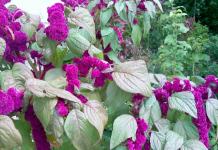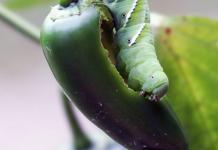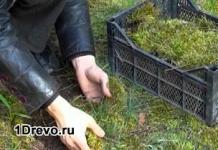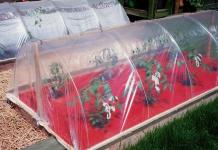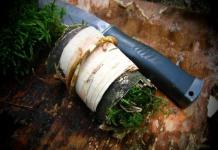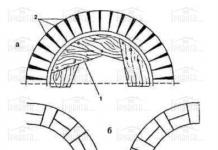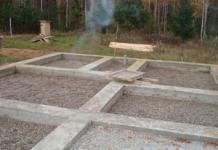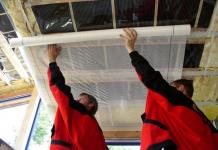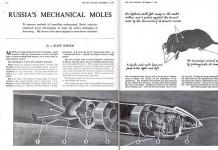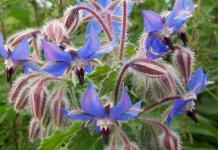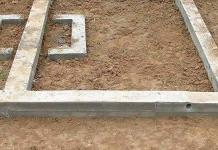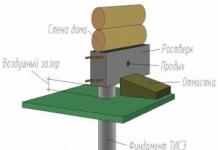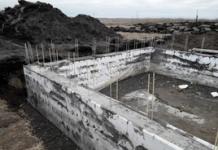Many of our readers have probably heard the expression "You ate too much like henbane." At the same time, not everyone knows that black henbane is a poisonous plant. It is a distant relative of the potato. The saying, which refers to the inadequate, strange behavior of a person poisoned by henbane, appeared for a reason. Why? We will talk about this in this article.
Spreading
Wild, widespread poisonous henbane (we posted a photo of the plant in this article) is found almost everywhere in the European part of our country, as well as in Western Siberia, Central Asia, and North Africa. It grows near roads, in weedy places, near dwellings.
Belena: description of the plant
A biennial herbaceous plant belonging to the nightshade family. Henbane has a specific intoxicating aroma. In the first year of life, a rosette of notched-pinnate cut leaves of an elongated shape is formed. Leaves covered with long hairs have a grayish tint.

Roots
A well-developed powerful root system has a thick, yellowish-brown main root, from which numerous lateral branches extend. In shape and color, they resemble the roots of parsley or parsnip, but at the same time they have a different branching. In the second year, the poisonous henbane plant has pubescent stems with sessile leaves up to a meter in height. In their upper part, the leaves are smaller, turning into bracts, in which rather large flowers later form.
flowers
The calyx is sticky-hairy, pitcher-like, with five spiny sharp lobes. Corolla dirty yellow with dark purple, almost black veins. One pestle. It consists of two carpels. Stamens five. The flowers, as well as the leaves, have a rather unpleasant smell, especially if you rub them in your hands.

Fruits and seeds
Henbane black - a plant that blooms from June to late autumn. Already in the middle of summer, you can see a lot of dry fruits on it. They are boxes resembling a pitcher with a lid extended at the bottom. If you remove it, then inside you can see a huge number of grayish-black, flat seeds. Their length is from one to one and a half millimeters, width - about a millimeter.

The black henbane plant is very fertile: one bush produces up to four hundred and forty-six thousand seeds.
Poisons in henbane
We have already said that henbane is a poisonous plant containing a large amount of alkaloids belonging to the atropine group. In different parts of the plant, the content of alkaloids is different. For example, the largest amount of toxic substances is found in the roots (up to 0.18%). In stems, this figure is much lower (less than 0.02%). Approximately the same amount of alkaloids is found in seeds and leaves (less than 0.1%).

You need to know that in different parts of the plant, the content of alkaloids varies depending on the place of growth. This is affected by seasonality, humidity, ultraviolet radiation. The composition of the leaves of henbane contains:
- atropine;
- scopolamine;
- flavonoids;
- hyoscyamine;
- hyoscipicrin;
- hyoscerin;
- glycosides;
- hyoscyrosine.
Henbane seeds contain:
- resins;
- fixed oils;
- glycosides;
- protein substances;
- mineral salts;
- gum;
- sugar.
When a poisonous henbane plant is consumed in large quantities, very quickly (after a maximum of twenty minutes) severe consequences occur, which often lead to death.
Symptoms of poisoning
Few people know that grass poison is so dangerous that a cow that has eaten at least one leaf of the plant will not give full safe milk. Henbane is especially dangerous because of the content in its composition of two substances - atropine and scolamin, which is one of the main ingredients in the production of "truth serum".
When combined, these substances block the nerve endings. As a result, the work of all organs and systems is disrupted. In case of poisoning, the symptoms appear very quickly and are presented in most cases by the following picture:
- due to severe dryness of the larynx, the swallowing reflex is disturbed;
- speech becomes difficult, becomes slurred, and the voice is rough and hoarse;
- photophobia is observed, vision is impaired;
- the skin turns red in different places;
- there is disorientation (a person cannot understand where he is);
- severe headache, accompanied by increased throbbing in the frontal part of the head and temples.
In more severe poisoning, which can be caused by a large amount of poison taken, the symptoms are as follows:
- overexcitation;
- a sharp increase in blood pressure;
- convulsions that are accompanied by pain;
- the color of the mucous membranes changes (cyanosis);
- the pulse is so weak that it can hardly be heard;
- the appearance of auditory and visual hallucinations.
Often, poisoning with a bleached black plant (you can see a photo of the plant in our review) causes respiratory failure. In this case, death occurs. If symptoms related to the second group appear, you should immediately call an ambulance.

Use in medicine
Belen was known to many ancient peoples - Hindus and Egyptians, Arabs and Persians. Preparations based on henbane were used in ancient Rome, Greece. In the Middle Ages, henbane replaced chloroform during operations. The plant has been used in medicine since the second half of the 19th century. Henbane oil, more precisely, an extract that is made from vegetable oil, is used to treat rheumatism and gout. It should be said that despite the fact that henbane is a poisonous plant, it is used in folk medicine to relieve asthmatic attacks.
To do this, you need to mix the dried leaves of henbane, dope and sage, pour into a frying pan, as hot as possible. Then you should inhale the vapors from the burnt leaves. This method quickly stops the attack. By the way, the Russian drug Astmatol, recommended for asthmatics, is made from dried henbane leaves.
For back pain, especially of a rheumatic nature, an oil solution is prepared. It consists of the juice of black henbane leaves and oil. The juice is mixed with vegetable oil in equal proportions, slightly warmed up and applied to the inflamed area.

Help with poisoning
Before the arrival of doctors, it is necessary to provide first aid to a person who has been poisoned by a poisonous henbane plant:
- It is urgent to wash the victim's stomach using activated charcoal or a weak solution of potassium permanganate (potassium permanganate) in a volume of up to one and a half liters.
- After that, the patient is given a laxative and enterosorbents.
- At high temperatures, antipyretic drugs are given.
- After that, until the ambulance arrives, the patient must be provided with physical and emotional rest.
In severe poisoning, such measures will help only for a while. We should not forget that self-medication can lead to unforeseen consequences. In the hospital, the patient will receive all the necessary medical care to save the patient's life and resume the work of the affected organs.
Contraindications
There are a number of restrictions on the use of this plant in any form. This is due to the fact that when using drugs based on this plant, intraocular pressure increases. Therefore, the treatment of patients suffering from glaucoma is strictly prohibited.
In addition, such drugs should not be taken by pregnant women, nursing mothers, people with diseases of the heart and blood vessels.
Biennial herbaceous soft-pubescent, sticky plant, with an unpleasant odor. The plant has an antispasmodic effect.
The plant is poisonous!Ask the experts
flower formula
Black henbane flower formula: Ch5L5T5P2.In medicine
Atropine, obtained from henbane leaves, is most widely used, especially in eye practice. It is also used in the treatment of internal diseases: with peptic ulcer of the stomach and duodenum, bronchial asthma, spastic conditions of the intestines and biliary tract. From the leaves of henbane, “bleached oil” (oleum Hyoscyami) is obtained, used for rubbing with rheumatic and neuralgic pains. Black henbane leaves are part of the anti-asthma collection.
Henbane herb preparations are also widely used in obstetrics and gynecology, they are prescribed for dysmenorrhea, to reduce painful spasms of the muscles of the cervix, rectum, urethra and vagina.
Herbal preparations of black henbane are of limited use. The plant is poisonous and preparations from it are used only as directed and under the supervision of a physician. Henbane herb preparations are contraindicated for pregnant women.
Classification
Black henbane (lat. Hyoscyamus niger L.) belongs to the genus henbane (lat. Hyoscyamus) from the nightshade family (lat. Solanaceae). About 20 species are widely distributed in Eurasia, Africa, North America, Australia and the Canary Islands. Approximately 10 species are found on the territory of the CIS.
Botanical description
The plant is very poisonous! A biennial herbaceous plant, entirely covered with soft sticky pubescence. The root is vertical, weakly branched up to 2-3 cm thick, soft, with a thickened root neck. Leaves of rather wide morphology: dark green above, lighter below, lower ones in a basal rosette, petiolate, oblong-ovate, notched-pinnately incised, usually die off by the time of flowering; stem - alternate, sessile, semi-amplex, ovate-lanceolate, notched-lobed 3-25 cm long, 3-10 cm wide. The stem is branched, reaches 20-60 cm in height or more, cylindrical, densely covered with glandular trichomes (hairs). The flowers are large (2.5-4 cm in diameter), slightly zygomorphic, sessile, located in the axils of the upper leaves. Henbane flower formula: Ch5L5T5P2. The calyx is joint-leaved, deeply divided, remaining with the fetus. Corolla sympetalous, broadly funnel-shaped with a dirty yellow tint, with a network of dark purple veins and a dark purple throat. The fruit is a capsule enclosed in a hardened calyx and opening with a lid. Seeds are small (1.5 mm long), brownish-gray, rounded or slightly reniform, flattened, with a mesh-cellular surface. Blossoms in June-July, seeds ripen in August-September.
Spreading
It grows almost everywhere, but prefers warmer areas. Widely distributed in the Caucasus, throughout the European part of Russia (except the Far North), less often in Siberia and as an adventive plant in the Far East. Favorite places of growth - wastelands, vegetable gardens, orchards, outskirts of fields, often grows as a weed among field crops. Introduced into culture, in particular in the Krasnodar Territory.
Distribution regions on the map of Russia.
Procurement of raw materials
In medical practice, the leaves and leafy stems (grass) of black henbane are used as raw materials, collected in the first year of life, usually in autumn, when normally developed basal leaves are formed, from biennial plants - during the flowering period, and during the period of fruit set - all grass. Dry in places with good ventilation, spread out in a layer of 1-2 cm, periodically turning over, or in dryers at a temperature not exceeding 60 0 C. Before drying, the grass is usually chopped on a straw cutter.
Henbane is a highly poisonous plant that causes severe poisoning, sometimes fatal. Children are more often poisoned, especially in the south. Therefore, one must be careful when collecting and drying as a medicinal raw material. After work, wash your hands thoroughly.
Chemical composition
All organs of black henbane contain alkaloids, mainly hyoscyamine, atropine, scopolamine: in roots (up to 0.18%), leaves (up to 0.10%), stems (about 0.02%), seeds (up to 0.10% ). The maximum amount of alkaloids in the leaves was found at the beginning of flowering. In the black henbane grass, substances of a glycosidic nature were also found: hyoscipicrin, hyoscerin, hyosciresin. The seeds contain up to 34% fatty oil, usually light yellow in color. The composition of the fatty oil includes: oleic acid - up to 22.4%, linoleic acid - up to 71.3% and unsaturated acids - up to 6.3%.
Pharmacological properties
Henbane herb preparations are used as an antispasmodic and analgesic, as well as a sedative in psychiatric practice and surgery in preparation for anesthesia.
The action of henbane preparations (dry and thick extracts) as antispasmodic and analgesic agents is due to the alkaloids contained in it - hyoscyamine, atropine, scopolamine, which have anticholinergic properties and thereby provide a therapeutic effect. Atropine of henbane is used in ophthalmic practice as a mydriatic agent. Atropine has a pronounced effect on the secretion of the salivary, digestive and sweat glands, as well as on the rhythm of heart contractions, intestinal smooth muscles, and bronchial muscles. In addition, atropine causes pupil dilation. An important healing property of henbane is relaxation of the bronchial muscles and a decrease in the secretion of bronchial glands, as well as an anesthetic effect in a mixture with chloroform in rheumatic and neurological diseases.
Application in traditional medicine
The special healing properties of henbane have been known to people since the dawn of history. But since henbane is a very poisonous plant, it is practically not used in folk medicine in its pure form. It is more often used externally in the form of an alcohol tincture with bleached oil for rubbing with gouty, rheumatic and neuralgic pains, as a lotion at the initial stages of the formation of boils and carbuncles, for rubbing with colds, coughs, pleurisy, etc. Henbane oil is used separately for rubbing with various muscular pains and bruises. With great care, decoctions of henbane herbs are used to treat stomach diseases, to prevent asthma, hepatic and intestinal colic, diarrhea, bladder spasms and toothache.
Historical reference
As a medicinal plant, henbane has been used since ancient times and the Middle Ages. Its healing properties were widely used by the ancient Romans and Greeks. In Europe, henbane has been used since the 6th century as a pain reliever.
Literature
1. Blinova K. F. et al. Botanical-pharmacognostic dictionary: Ref. allowance / Ed.
K. F. Blinova, G. P. Yakovlev. - M .: Higher. school, 1990. - S. 187. - ISBN 5-06-000085-0.
2. State Pharmacopoeia of the USSR. Eleventh edition. Issue 1 (1987), issue 2 (1990).
3. State Register of Medicines. Moscow 2004.
4. Ilyina T.A. Medicinal Plants of Russia (Illustrated Encyclopedia). - M., "EKSMO" 2006.
5. Zamyatina N.G. Medicinal plants. Encyclopedia of the nature of Russia. M. 1998.
6. Medicinal plants: A reference guide. / N.I. Grinkevich, I.A. Balandina, V.A. Ermakova and others; Ed. N.I. Grinkevich - M.: Higher School, 1991. - 398 p.
7. Medicinal plants of the State Pharmacopoeia. Pharmacognosy. (Edited by I.A. Samylina, V.A. Severtsev). - M., "AMNI", 1999.
8. Medicinal plant materials. Pharmacognosy: Proc. allowance / Ed. G.P. Yakovlev and K.F. Pancake. - St. Petersburg: Spec. Lit, 2004. - 765 p.
9. Lesiovskaya E.E., Pastushenkov L.V. "Pharmacotherapy with the basics of herbal medicine." Tutorial. - M.: GEOTAR-MED, 2003.
10. Mannfried Palov. "Encyclopedia of Medicinal Plants". Ed. cand. biol. Sciences I.A. Gubanov. Moscow, Mir, 1998.
11. Mashkovsky M.D. "Medications". In 2 volumes - M., New Wave Publishing House LLC, 2000.
12. Nosov A.M. Medicinal plants in official and traditional medicine. M.: Eksmo Publishing House, 2005. - 800 p.
13. Plants for us. Reference manual / Ed. G.P. Yakovleva, K.F. Pancake. - Publishing house "Educational book", 1996. - 654 p.
14. Plant resources of Russia: Wild flowering plants, their composition and biological activity. Edited by A.L. Budantseva. T.5. M.: Association of scientific publications KMK, 2013. - 312 p.
15. Sokolov S. Ya. Medicinal plants. - Alma-Ata: Medicine, 1991. - S. 118. - ISBN 5-615-00780-X.
16. Sokolov S.Ya., Zamotaev I.P. Handbook of medicinal plants (phytotherapy). - M.: VITA, 1993.
17. Turova A.D. "Medicinal plants of the USSR and their application". Moscow. "Medicine". 1974.
18. "Phytotherapy with the basics of clinical pharmacology", ed. V.G. Kukes. - M.: Medicine, 1999.
19. Chikov P.S. "Medicinal plants" M.: Medicine, 2002.
Black henbane - Hyoscyamus niger L. " style="border-style:solid;border-width:6px;border-color:#ffcc66;" width="250" height="334">
style="border-style:solid;border-width:6px;border-color:#ffcc66;" width="250" height="333">
style="border-style:solid;border-width:6px;border-color:#ffcc66;" width="250" height="334">
Other names: Night blindness, Lulik.
Diseases and effects: rheumatism, gout, neuralgic pains, asthma, dysinteria, chorea, convulsive vomiting.
Active substances: hyoscyamine, tropine, 1-scopolamine, hyoscine, apoarropin, apogioscin, belladonin, juscipicrin, chyuscerin, hyosciresin, methylesculin, rutin.
Plant collection and preparation time: Aug. Sept.
Botanical description of black henbane
Black henbane is a biennial winter plant of the nightshade family (Solanaceae). Covered with soft, sticky, protruding fluff - soft glandular sticky hairs. Possesses an unpleasant smell.
Root vertical, branched, soft, sometimes almost spongy, wrinkled, with a thickened root collar.
stems solitary, 20-115 cm high, branched, tubular, green, pubescent.
Leaves soft, dull, dark green, light, grayish below, with denser and longer pubescence along the veins and along the edges. The leaves of henbane are arranged alternately.
flowers not numerous, at the beginning of flowering they are crowded on the tops of stems and branches. Corolla dirty yellowish, rarely whitish with a network of purple-violet veins.
Fetus- multi-seeded (two-celled) box. The fruit of black henbane has the shape of a jug with a hemispherical lid. Seeds are small, numerous, resembling poppy seeds.
Henbane blooms in June - September; seeds ripen in July-August. Propagated only by seeds.
In medicine, rosette leaves of the first year of life are used, collected in late summer - early autumn (August - September) or in the second year of life during budding or flowering of the plant.
Habitats and distribution of black henbane
Black henbane is common in the European part, in the Caucasus, less often in Central Asia, Siberia, and the Far East.
Black henbane is a ruderal weed. Grows on streets, vacant lots, garbage heaps, near buildings, in yards, near livestock wintering grounds, along ditches, on shallows, pebbles, deposits, pastures, roads; less common in fallow fields, gardens, orchards and fields; in the Crimea grows on the outskirts of vineyards. It does not form thickets, grows scattered or in small groups.
In recent years, due to the improvement of the sanitary condition of settlements and the improvement of agricultural culture, the thickets of black henbane have decreased. In this regard, whiter black is introduced into industrial culture in the Voronezh and Novosibirsk regions.
Harvesting black henbane and quality of raw materials
Henbane is collected and harvested in Ukraine, Belarus, the Rostov region, the Krasnodar Territory and the adjacent regions of the North Caucasus.
When harvesting, rosette leaves of henbane are cut with knives or sickles, stem leaves are torn off by hand. Do not collect leaves affected by powdery mildew, as well as wet from rain or dew, as they turn brown when dried. The raw materials of henbane are dried in dryers at a temperature of 40 ° C or in attics with good ventilation, spreading out in a thin layer. It is desirable that the room be dark, under an iron roof. Raw materials must be turned frequently. Drying is considered complete if the petioles of the leaves break when bent.
Henbane is very poisonous, therefore, when collecting and drying it, care must be taken not to touch the eyes, lips, and nose with your hands. After work, you should thoroughly wash your hands. Raw henbane, like other poisonous plants, should be stored separately from the rest of the raw materials.
The finished raw material of henbane consists of glandular-hairy, grayish-green leaves 5-20 cm long and 3-10 cm wide. The smell of the raw material is peculiar, narcotic, weak, aggravated by moisture. Numerical indicators: moisture should be no more than 14%; total ash not more than 20%; ash insoluble in 10% hydrochloric acid solution, not more than 10%; blackened, browned and yellowed leaves no more than 3%; other parts of henbane no more than 5%; organic impurities not more than 1%; mineral - no more than 1%; crushed parts passing through a sieve with holes with a diameter of 3 mm, no more than 8%. The content of alkaloids in henbane leaves Must be at least 0.05%.
The raw material of henbane is packed, compressing it into bales or bales of 50 kg. Store in a packaged form with precaution (according to list B) in dry, well-ventilated areas, on shelves. The shelf life of raw materials is 2 years.
The chemical composition of black henbane
All parts of henbane contain atropine alkaloids: hyoscyamine, tropine, 1-scopolamine (hyoscine), apoathropin, apogioscin, belladonin; glycosides juscipicrin, chyuscerin, hyosciresin, methylesculin. Seeds contain up to 14% fatty oil, which includes oleic, linolenic and other acids; The leaves are rich in flavonoids, especially rutin.
Pharmacological properties of black henbane
Black henbane preparations have a peripheral m-anticholinergic effect associated with the presence of tropane alkaloids in the plant. The drugs reduce or stop spasms of the smooth muscles of the intestines, biliary and urinary tract, to a lesser extent act on the smooth muscles of the bronchi. They inhibit the separation of lacrimal fluid, saliva, mucus and gastric juice.
Due to the use of small therapeutic doses, henbane preparations do not affect the central nervous system, especially the cerebral cortex. Pupil dilation is observed only after taking the maximum doses of plant preparations. Depending on the content of scopolamine in raw materials, its effect on the central nervous system cannot be unambiguous. With the predominance of the content of this alkaloid, the plant often has a sedative effect, inhibits the processes of excitation in the motor zone of the cortex.
The use of black henbane in medicine
As a medicinal plant, henbane was used in ancient Greece and ancient Rome. The Persians and Egyptians were also treated with henbane.
Galenic preparations of henbane are of limited use. In the form of an extract, in some cases, instead of belladonna extract, it is prescribed as an antispasmodic and analgesic for diseases of the gastrointestinal tract associated with spasms of smooth muscles.
Henbane oil is used as an analgesic for rheumatic and neuralgic pains. Henbane leaves are part of complex preparations used in the treatment of asthma.
Henbane in the form of oil is used externally for gout, rheumatism, muscle and neurological pain. The oil is prepared as an infusion of 15-30 parts of henbane seeds in 100 parts of vegetable oil (unrefined) for 8-10 days.
A tincture of 15 g of crushed henbane leaves per 100 g of 70% alcohol is taken 2 drops per 1 tablespoon of water 3 times a day for dysentery, chorea (Witt's disease), convulsive vomiting, even for epilepsy as a sedative.
Side effects and contraindications to the use of black henbane
Black henbane is poisonous, so all its preparations are used only as directed by a doctor.
It should be remembered that in small doses, henbane preparations act sedative (calming), and in large doses - exciting.
Dosage forms of black henbane, method of administration and doses
Henbane dry extract(Extractum Hyoscyami siccum) appoint 0.02-0.05 g per reception. Higher doses for adults: single 0.1 g, daily 0.3 g.
Henbane black is part of the anti-asthma drugs Astmatol and Astmatin.
Pharmacotherapeutic group. Antispasmodic, M-anticholinergic, analgesic, local irritant.
plant description
text_fields
text_fields
arrow_upward
henbane leaves- folia hyoscyami
- hyoscyamus niger l.
Sem. Nightshade— solanaceae
Other names: night blindness, fading.
Rice. 10.6. Black henbane - Hyoscyamus niger L.
Biennial soft-pubescent, sticky herbaceous plant with an unpleasant odor (Fig. 10.6). In the first year of life, only a rosette of basal long-petioled oblong-ovate or elliptical leaves with a few large teeth is formed, in the second year - a single branched stem 50-100 cm high, with alternate sessile semi-amplex leaves.
stem leaves oblong-lanceolate, notched-lobed or incised, with triangular lobes.
flowers slightly irregular, five-membered, with a double perianth, almost sessile, collected in an inflorescence whorl, which unwinds and lengthens as the fruit is formed. Corolla dirty yellow with purple veins, almost wheel-shaped.
Fetus- enclosed in a calyx remaining with the fruits, a jug-shaped multi-seeded box that opens with a lid.
seeds small, rounded, brownish-gray, with a fine-meshed surface.
Blooms almost all summer. Seeds ripen in August - September.
Composition of henbane
text_fields
text_fields
arrow_upward
The chemical composition of henbane
The henbane leaves contain
- the sum of tropane alkaloids (0.04-0.16%):
- the main one is hyoscyamine,
- as well as hyoscine,
- apogioscin,
- scopolamine,
- apoatropine;
- flavonoids - spireoside, quercitrin, hyperoside, rutin.
Found in henbane seeds
- withanolides.
Properties and uses of henbane
text_fields
text_fields
arrow_upward
Pharmacological properties of henbane
Henbane preparations have
- M-anticholinergic action associated with the presence of tropane alkaloids in the plant.
- The drugs reduce or stop spasms of the smooth muscles of the intestines, biliary and urinary tract, to a lesser extent act on the smooth muscles of the bronchi.
- They inhibit the separation of lacrimal fluid, mucus and gastric juice.
The use of henbane
- Henbane leaves are part of the anti-asthma collection;
- used to obtain an oil extract, applied externally as a distraction and pain reliever for
- neuralgia,
- myositis,
- rheumatoid arthritis.
Spreading
text_fields
text_fields
arrow_upward
Spreading. Widespread in the European part of the country, in the Caucasus, in Siberia. It does not form thickets, grows scattered or in small groups.
Habitat. Ruderal and weed plant. It grows on the streets, garbage places, along roads, in gardens and orchards, in fields, borders and pastures, near housing. Cultivated in Ukraine and in the Krasnodar Territory (Russia).
Procurement and storage of raw materials
text_fields
text_fields
arrow_upward
blank. Rosette leaves are cut with knives or sickles, stem leaves are cut off by hand in the flowering phase. It is allowed to harvest henbane grass, which is harvested during the period of the end of flowering and the beginning of fruiting. It is not allowed to collect leaves affected by powdery mildew, as well as dirty and wet from dew or rain. The leaves are placed loosely in the container so as not to cause their blackening during drying.
The plant is poisonous, so precautions must be taken when harvesting and drying raw materials.
Security measures. It is not allowed to uproot wild plants.
Drying. In attics with good ventilation, the raw materials are laid out in a thin layer (1-2 cm) and periodically stirred. Drying in dryers with artificial heating at a temperature of 40-45 °C is possible. The yield of dry raw materials of leaves is 16-18%.
Standardization. GF XI, no. 2, art. 17.
Storage. In a dry, well-ventilated area, according to list B, separately from other raw materials. Whole raw materials are packed in bales, cut - in bags. Shelf life 3 years.
External signs of raw materials
text_fields
text_fields
arrow_upward
Whole Raw Material
Whole or partially crushed leaves are oblong-ovate, ovate or elliptical, pinnatifid, pinnately lobed or whole with an unevenly serrated edge.
basal leaves with a long petiole, covered on both sides with thick, long, soft hairs;
stem- without petioles, less pubescent, hairs located mainly along the veins and the edge of the leaf blade. Leaf length 5-20 cm, width 3-10 cm. median vein whitish, flat, strongly expanding towards the base.
leaf color grayish green. Smell
Taste is not defined (!).
Crushed raw materials
Pieces of leaves of various shapes, passing through a sieve with holes with a diameter of 7 mm.
Color grayish green. Smell weak, peculiar, aggravated by moisture.
Taste is not defined (!).
Microscopy of raw materials
text_fields
text_fields
arrow_upward
Cells of the epidermis of the leaf on the upper side with slightly sinuous walls, on the lower side - with more sinuous ones.
stomata numerous on both sides of the leaf, surrounded by 3 (rarely 4) parotid cells, of which one is usually smaller than the others (anisocytic type).
hairs numerous, of two types: simple and capitate. Simple hairs are thin-walled, some of them are 2-3-celled, small, others are multicellular, very large. Capitate hairs with long multicellular stalk and 4-8-celled (rarely 1-2-celled) glandular head.
In the leaf mesophyll contains single prismatic crystals of calcium oxalate; often in late collected leaves there are crystals in the form of cruciform growths or blunt drusen.
In large veins there are elongated oval cells filled with crystalline sand.
in young leaves contains only small, barely noticeable prismatic crystals located near the veins (Fig. 10.7).
Rice. 10.7. Microscopy of a henbane leaf:
A - the epidermis of the upper side;
B - epidermis of the underside:
1 - simple hairs;
2 - capitate hairs;
3 - crystals of calcium oxalate.
Numerical indicators of raw materials
text_fields
text_fields
arrow_upward
Whole Raw Material. The amount of alkaloids in terms of hyoscyamine, determined titrimetrically, is not less than 0.05%; humidity not more than 14%; total ash not more than 20%; ash, insoluble in 10% hydrochloric acid solution, not more than 10%; yellowed, brownish, blackened leaves no more than 3%; other parts of the plant (stems, flowers, fruits) no more than 5%; crushed particles passing through a sieve with holes with a diameter of 3 mm, not more than 8%; organic impurities not more than 1%; mineral impurity no more than 1%.
Crushed raw materials. The amount of alkaloids in terms of hyoscyamine is not less than 0.05%; humidity not more than 14%; total ash not more than 20%; ash, insoluble in 10% hydrochloric acid solution, not more than 10%; yellowed, browned and blackened pieces of leaves no more than 3%; other parts of the plant (flowers, fruits, pieces of stems) no more than 5%; particles that do not pass through a sieve with holes with a diameter of 7 mm, not more than 8%; particles passing through a sieve with holes of 0.5 mm, not more than 10%; organic impurities not more than 1%; mineral impurity no more than 1%.
Henbane medicines
text_fields
text_fields
arrow_upward
- Henbane leaves are part of the anti-asthma collection.
- Bleached oil, oil for external use (oil extract). Pain reliever, irritant.
- Bleached butter is a part of combined liniments (“Saliniment”, “Kapsin”, methyl salicylate complex liniment, etc.).
Henbane black, mad grass
Henbane is black, mad grass. Hyoscyamus niger L. Nightshade family.
A biennial herbaceous plant with a cylindrical hollow stem and an unpleasant odor. In the first year, a basal rosette develops from large long-leaved leaves, ovate, with a pinnately cut edge. The leaves are soft and sticky. The following year, a stem grows up to 100 cm high, with sessile, stem-bearing, ovoid, coarsely toothed leaves. The entire plant is covered with sticky glandular hairs. Inflorescence - curl. The flowers are large, funnel-shaped corolla, dirty purple. The fruit is a two-nested pitcher box. Seeds are small, yellowish-gray. Blooms almost all summer.
As a weed plant, it is widely distributed near housing, roads, gardens, yards, and fallows. The distribution area is limited by the Kuznetsk Basin, in the mountains, occasionally accompanied by human habitation.
The plant contains poisonous alkaloids: onosdiamine, hyoscine (scopolamine), atropine and others, glycosides hyoscipicrin, protein and resinous substances, up to 35% fatty oil, sugar, mineral salts, gum, calcium oxalate were found in the seeds.
Henbane is included in the State Pharmacopoeia of the 10th edition. The extract of the plant is used as an antispasmodic and analgesic. As an external anesthetic for rubbing with neuralgia, rheumatism and other diseases, bleached oil is prescribed along with turpentine, chloroform, etc. Bleached oil is part of the capsin liniment, intended for the treatment of radiculitis, neuritis, myositis, arthritis. Henbane leaves are part of the complex powders and cigarettes of asthmatol and asthmatin, used for smoking in bronchial asthma. Henbane preparations can be used only as directed and under the supervision of a physician.
In folk medicine, henbane has been known since antiquity as a strong analgesic and anti-spasmodic agent. Henbane leaves were used for headaches, coughs, bronchial asthma, spasms of the stomach and intestines, with difficulty urinating, painful menstruation, insomnia, hysteria. A decoction of the leaves. vegetable oil was instilled with inflammation in the ear. Leaves infused with vodka were recommended as a rub for rheumatism, backache, gout, bruises. The smoke from the seeds was inhaled for toothache. Hot henbane baths were used as a pain reliever for joint swelling.
Medicinal raw materials - leaves and tops of plants. Rosette leaves of the first year of life are harvested in autumn, stem leaves of the second year - during flowering. The grass is harvested in dry and clear weather. Dry immediately in the shade, spreading a thin layer on a cloth or paper. The yield of dry raw materials is 16-18%. Shelf life up to 2 years.
Wash your hands thoroughly after picking up henbane. With inept handling. bleached poisoning is possible.
Krylov G. N., Stepanov Z. V. Green Pharmacy of Kuzbass. Kemerovo. 1979
Photo: Molbiol.ru


